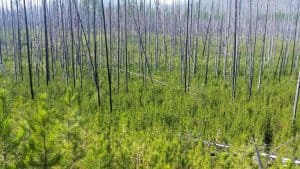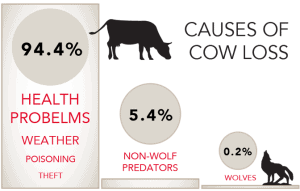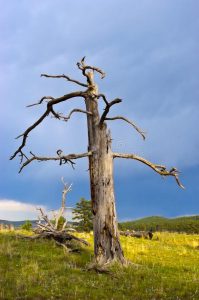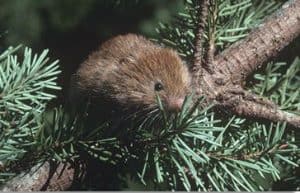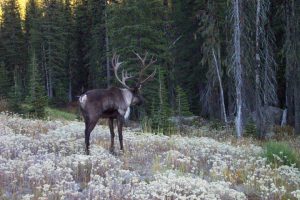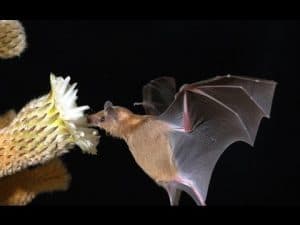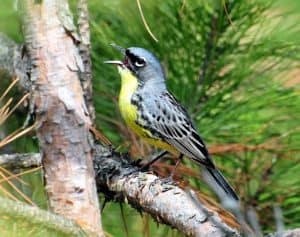That’s the title of this article. It starts out with Chad Hanson walking the Rim Fire in California, so I thought there would be some interest here. Like so many things, the answer I get from this is “it depends.” It first depends on what the desired condition is.
Several months after the Rim Fire was extinguished, Eric Holst, a vice president of the Environmental Defense Fund, penned a blog stating that “letting nature heal itself” after a high-intensity fire is likely to result in a forest dominated by shrubs for many decades.”
As if that result is inherently wrong. Whether that is a desired outcome or not is the kind of issue that should be addressed strategically through forest planning. It may be fine from an ecological standpoint. If the plan determines that speedier regeneration is needed for old growth species or economic reasons, that should be debated and decided at the plan level.
Then there is the science question of whether that would really be the outcome. That depends on the nature of the site and the fire. Regeneration problems seem to be the exception rather than the rule in the Bob Marshall Wilderness in Montana:
“The exception, he says, is in areas that have reburned in less than 20 years, too soon to allow for a seed crop to mature, especially on the west- and south-facing slopes that are hotter and drier.”
The key question to me then seems to be whether salvage logging in susceptible areas reduces the chance of reburns. That is a determination that could be required at the project level by a forest plan standard (for those areas with a desired condition for rapid revegetation).
The site-specific effects of each salvage project would also need to be determined (and could provide reasons to not log despite the authority in the forest plan to do so), because …
“The scientific literature on post-salvage logging is contradictory. Some studies argue that the practice is beneficial because it churns up the ground, softening hard, water-repellant soils that sometimes form after an intense fire. Proponents also insist that the detritus left behind after logging inhibits erosion. Critics such as Hanson say that the logging skidders decrease natural forest regeneration, kill seedlings, and compact the soil in a way that increases runoff and erosion, harming aquatic life in streams and rivers.”
Of course, maybe salvage logging is just as simple as how this reporter characterized the latest salvage efforts on the Lolo National Forest:
“The Lolo National Forest wants make the best of last year’s 160,000-acre Rice Ridge fire by logging some trees… If they can get the chief of the Forest Service to grant an Emergency Situation Determination, the public will not be allowed to object to the project once Mayben makes her final decision.”
